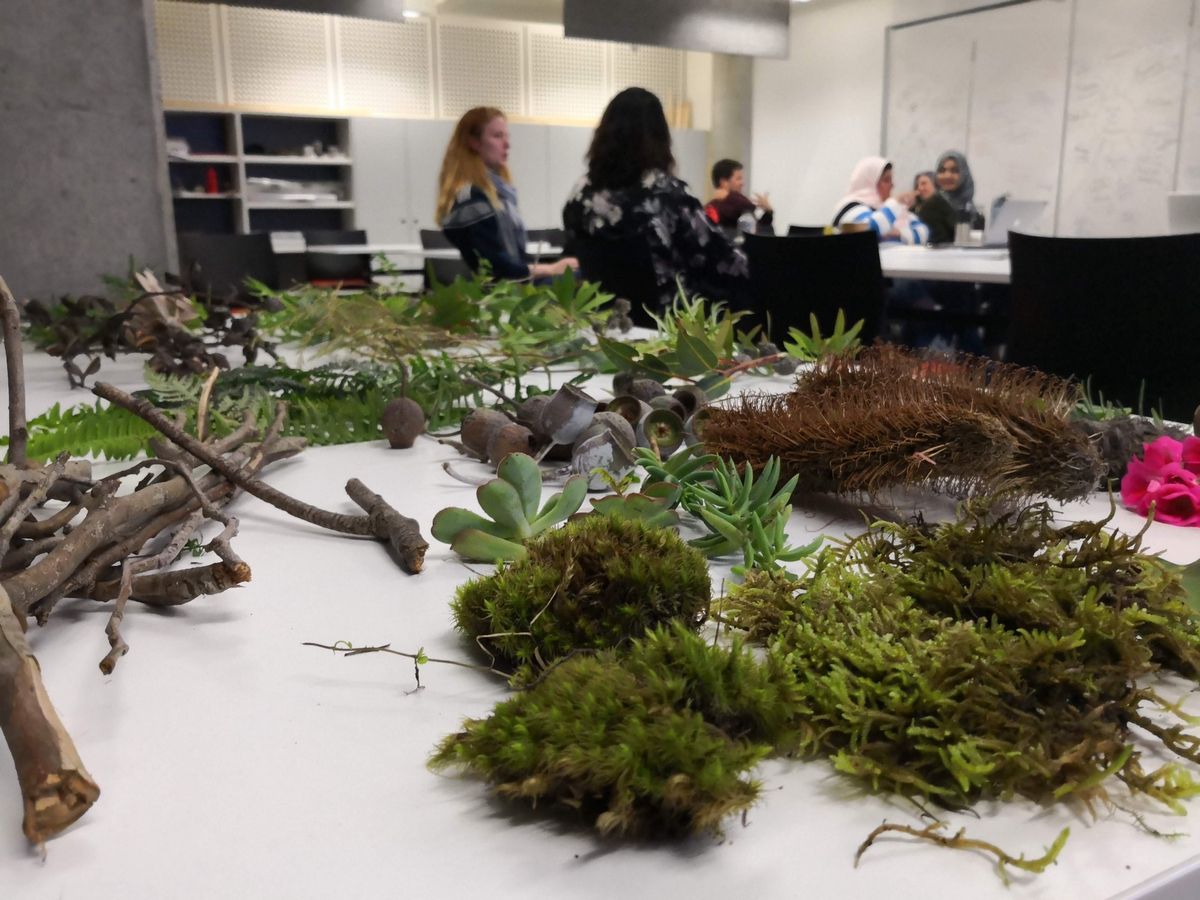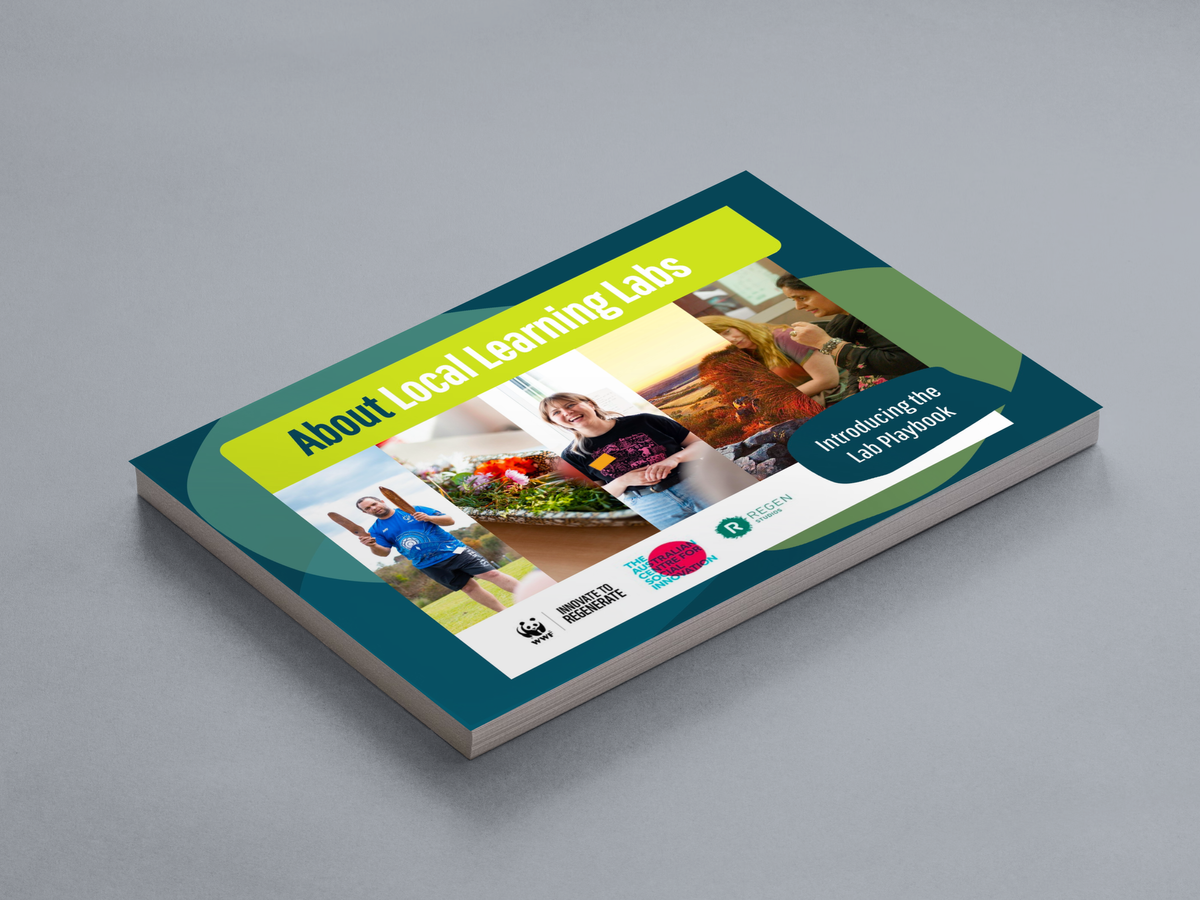Social imagination for regenerative neighbourhood futures
When you imagine the future of your Street does it feel like a thriving place to live?

It feels like Social Imagination and Futures are a bit of a buzzword from the past 5 years - possibly in response to our collective lack of movement on key challenges which face us as societies around the world. Covid felt like a window where something drastically different was possible - the upwelling of mutual aid, the carbon emissions drop, the temporary 'basic income' experiments to support furloughed workers. But the snapback felt rapid and rigid, and the right of several populist leaders and swings towards fear and distrust have been marked in some quarters.
So perhaps we're collectively responding to the gap in action towards better futures, as well as the felt reality that people are struggling to believe that something else is possible.
This was the context I was holding through last year as we were hosting Futures Visioning workshops to help people across the Clayton area come together to discuss how we could accelerate and broaden the Net Zero moves of Monash University, Councils, local businesses, nonprofits, communities and enterprising and caring groups and individuals.
We’ve been intrigued by the response to the sessions we ran in the middle of 2023 - people have told us they loved the collaborative workshops, some have told us that it’s really helped them understand the future they care about shaping, and someone else even made us a book of photos from the sessions and said it was a highlight of their year!









Our ‘Living Worlds’ futuring process is strongly influenced by participatory design culture and methods, and was originally developed to focus on integrating ethnographic research, transition management ideas, and lived experience into visions of the future of the Monash Technology Precinct. We’ve just published the Visioning report, so you can read all about the process here:

Melbourne Design Week, May 2024
This Melbourne Design Week we had the opportunity to take a slice of the research methods from Net Zero Precincts, and collaborate with Regen Streets to host a session with local folks in St Kilda at the Victorian Pride Centre.
When the opportunity came up to take this to an entirely different place and context, we decided to sieze the moment to see if the living world method would work well and how it might produce different results. To give it some grounding, we partnered with Regen Melbourne’s ‘wildly ambitious project’ - Regen Streets which aims to unleash a wave of connected regenerative neighbourhoods around Melbourne.

“How can we actively support local activation towards regeneration and nurture learning and connectedness between unique communities? How do we ensure that these community-led efforts influence the centralising forces in our system which stifle genuine transformation?”
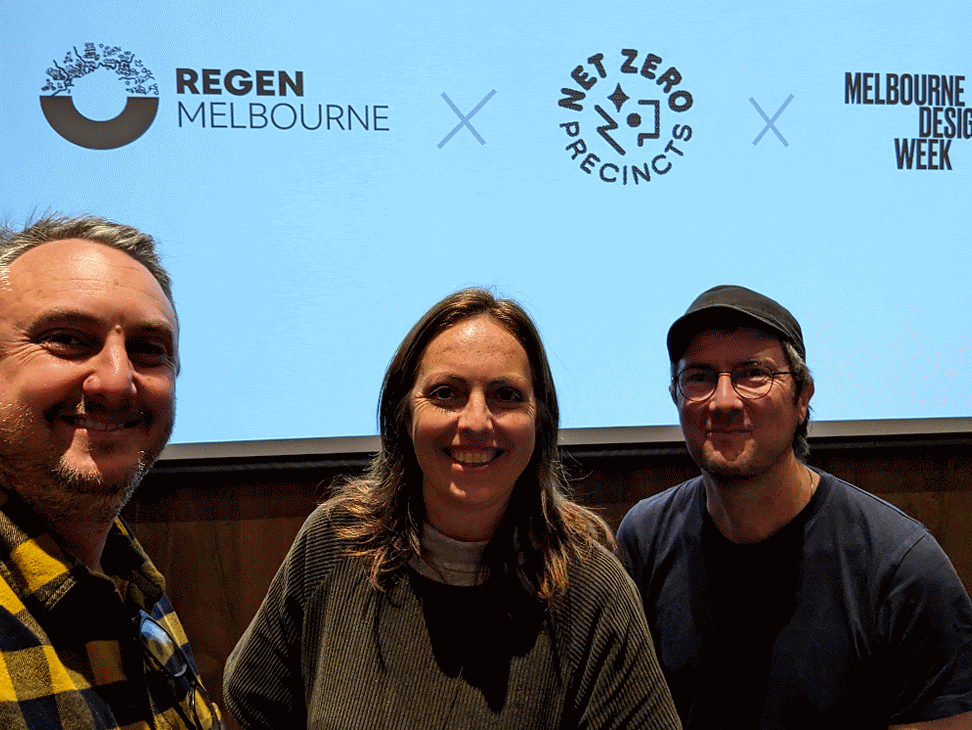
Needless to say we’re fairly aligned and the opportunity to explore the intersections of our work has been high on our list. For Net Zero Precincts, we have increasingly understood one of the primary roles our research project can play (as well as influencing the transition management methodology and seeding a number of net zero experiments across the precinct), is that we’re building capacity for transition governance at various levels of society and across sectors.
Transitions are rarely centrally guided - they’re a mixture of action at the grassroots, shifts in policy and services in governments, the altering of investment rationale, and the development of new products and built environments - amongst other things. We believe Futuring plays a central part in unlocking the conversations, relationships, imagination and crucially - experiencing a pocket of the new futures being imagined and transitioned toward. You can read a bit more about Transitions theory here amongst other places.
To that end, I'm committed to seeing how the likes of our Living Futures experience can be used to get people unstuck, have new conversations, and reimagine the potential collaborations around net zero transitions.
And that’s just what we experienced in St Kilda at Melbourne Design Week - people came, reflected, imagined, and got excited about the Living Worlds they built in response to the question “What does a Regen Street mean to you?”
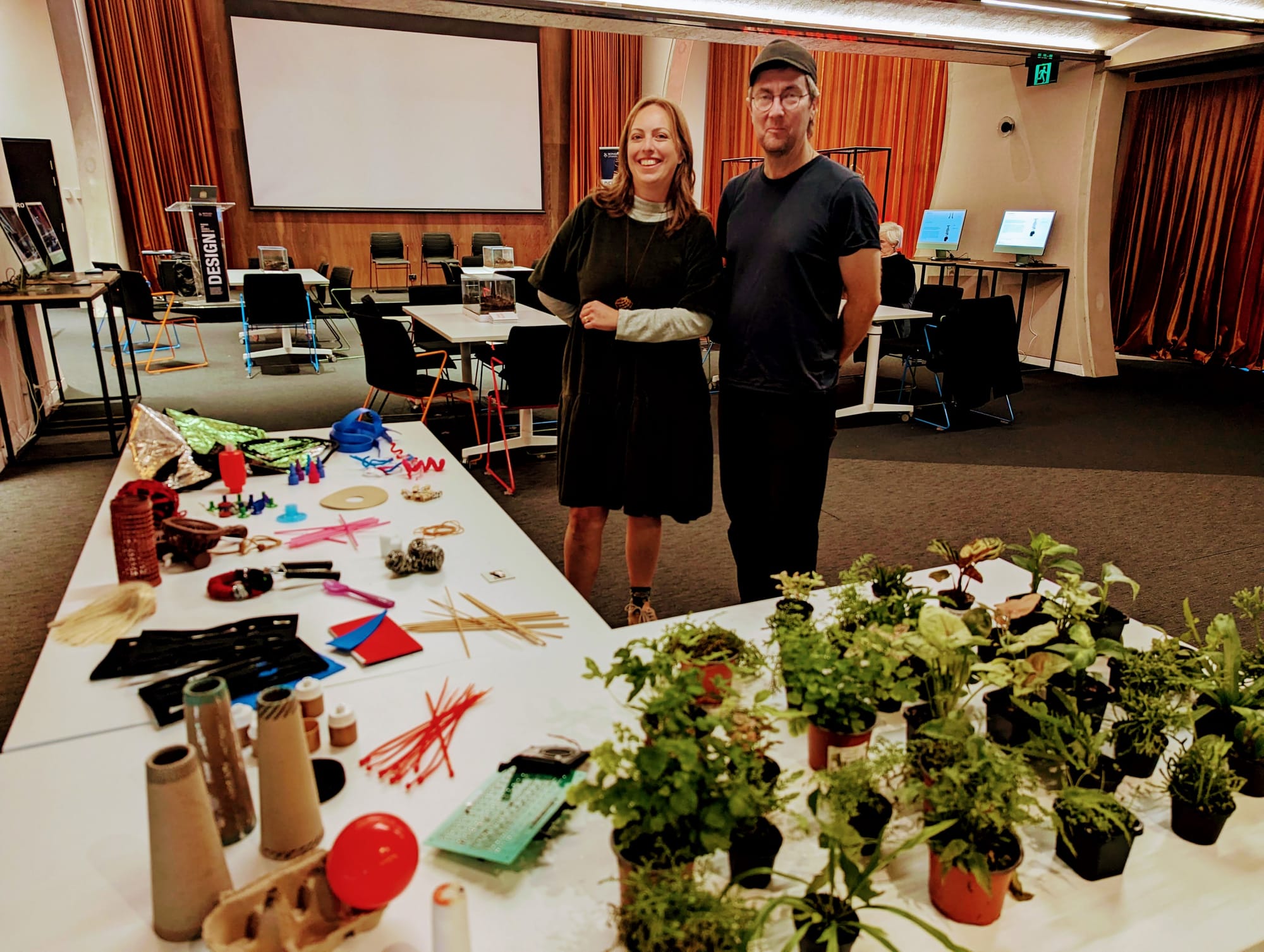
Our Process
2 hours. 15 people (we actually had 40 signups so something went wrong but it made for a more manageable group).
Our basic flow went:
- Scene setting - about Doughnut Economics and Regen Streets
- Walking (and noticing) - street detectorism style, we asked participants to be 'citizen researchers' and go out into St Kilda to look for signs of all stages of Doughnut Economics (planetary overshoot, gaps in the social foundation, and life in a just and equitable middle) as well as seeds of emerging regenerative futures (transitions thinking).
- Imagining - Nina walked us into the future with some inspiration from Rob Hopkins
- Making - finding others to work with to create a 'living world' in response to the question 'What does a Regen Street mean to you?'

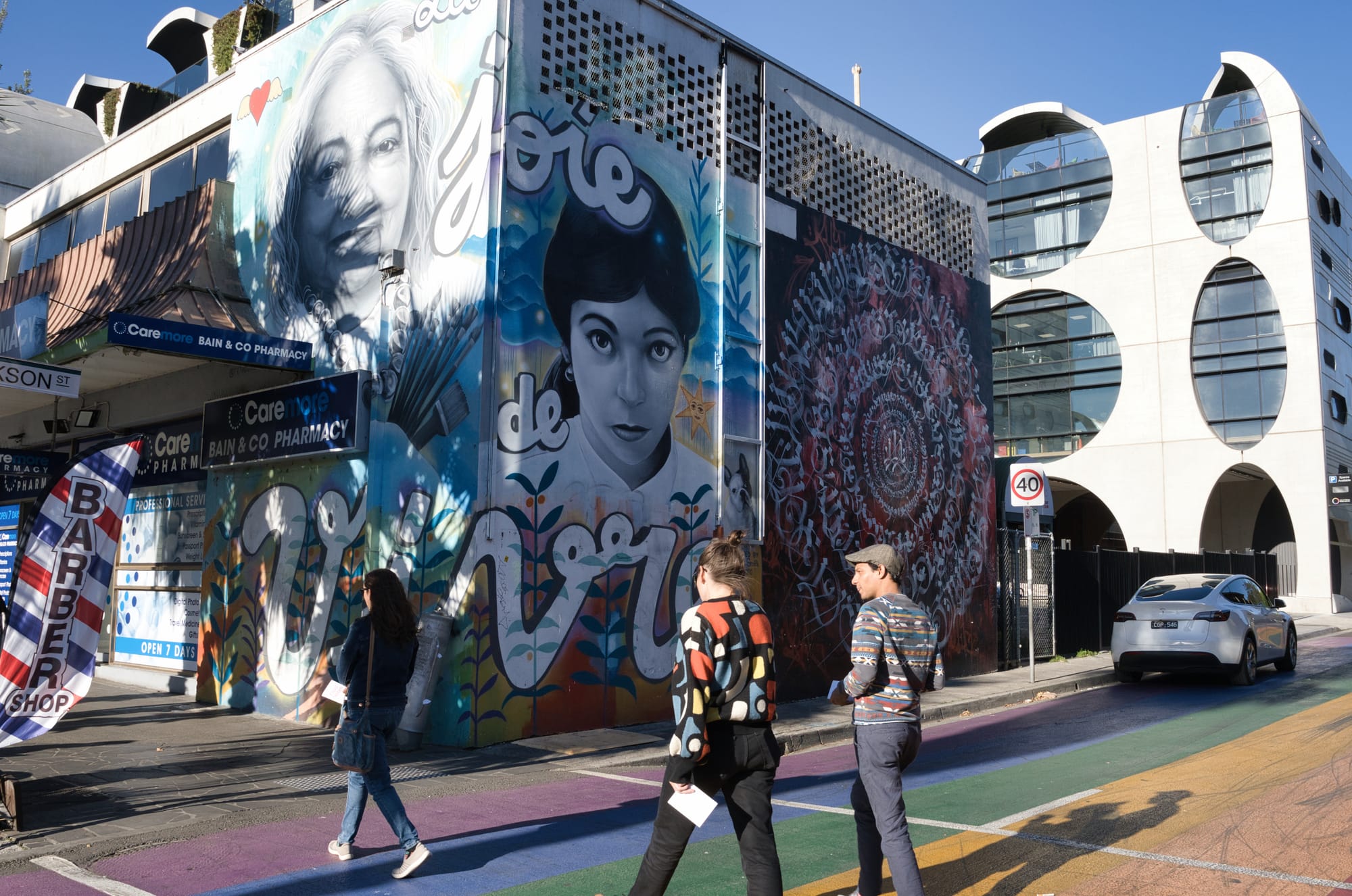

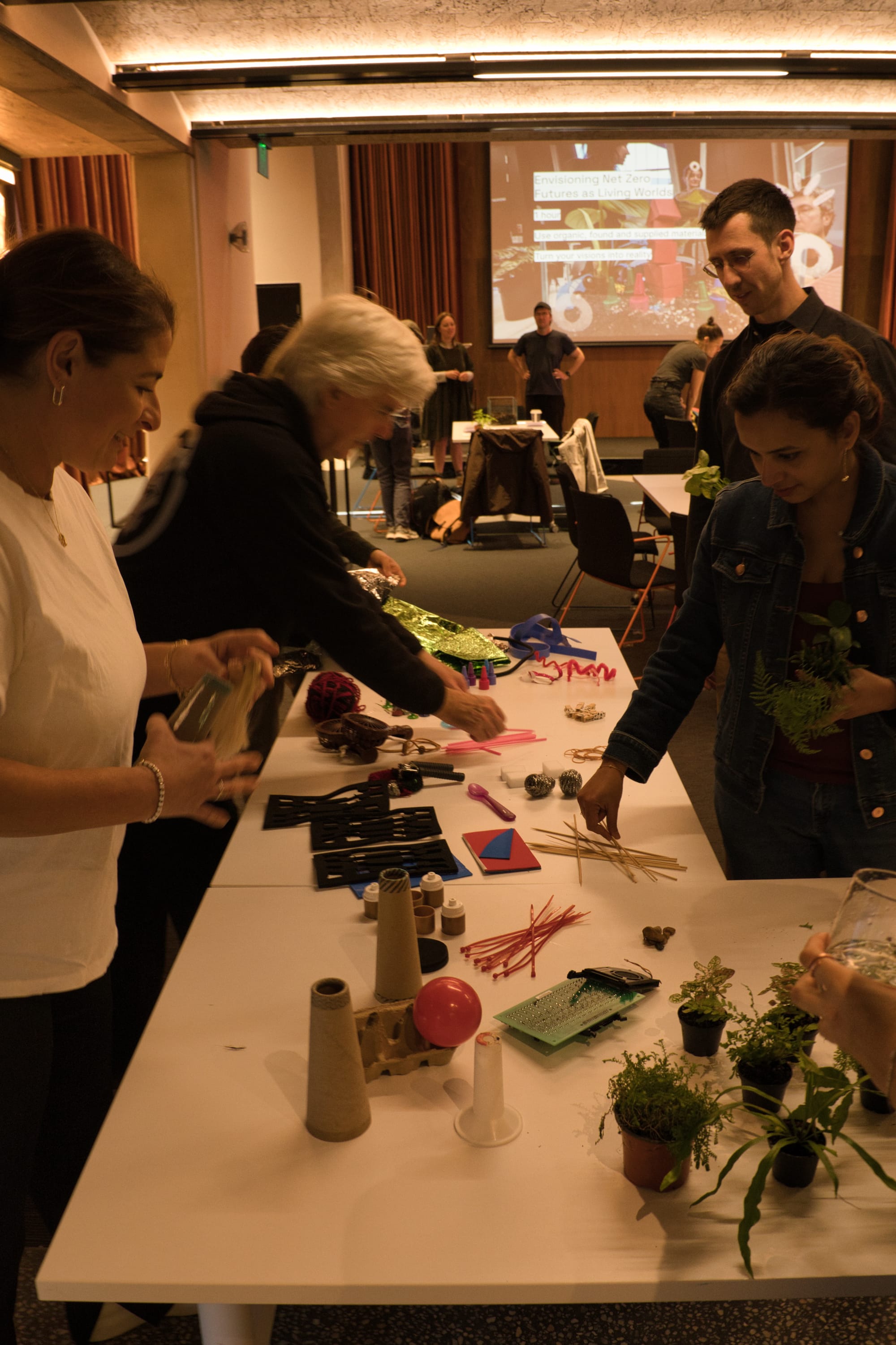


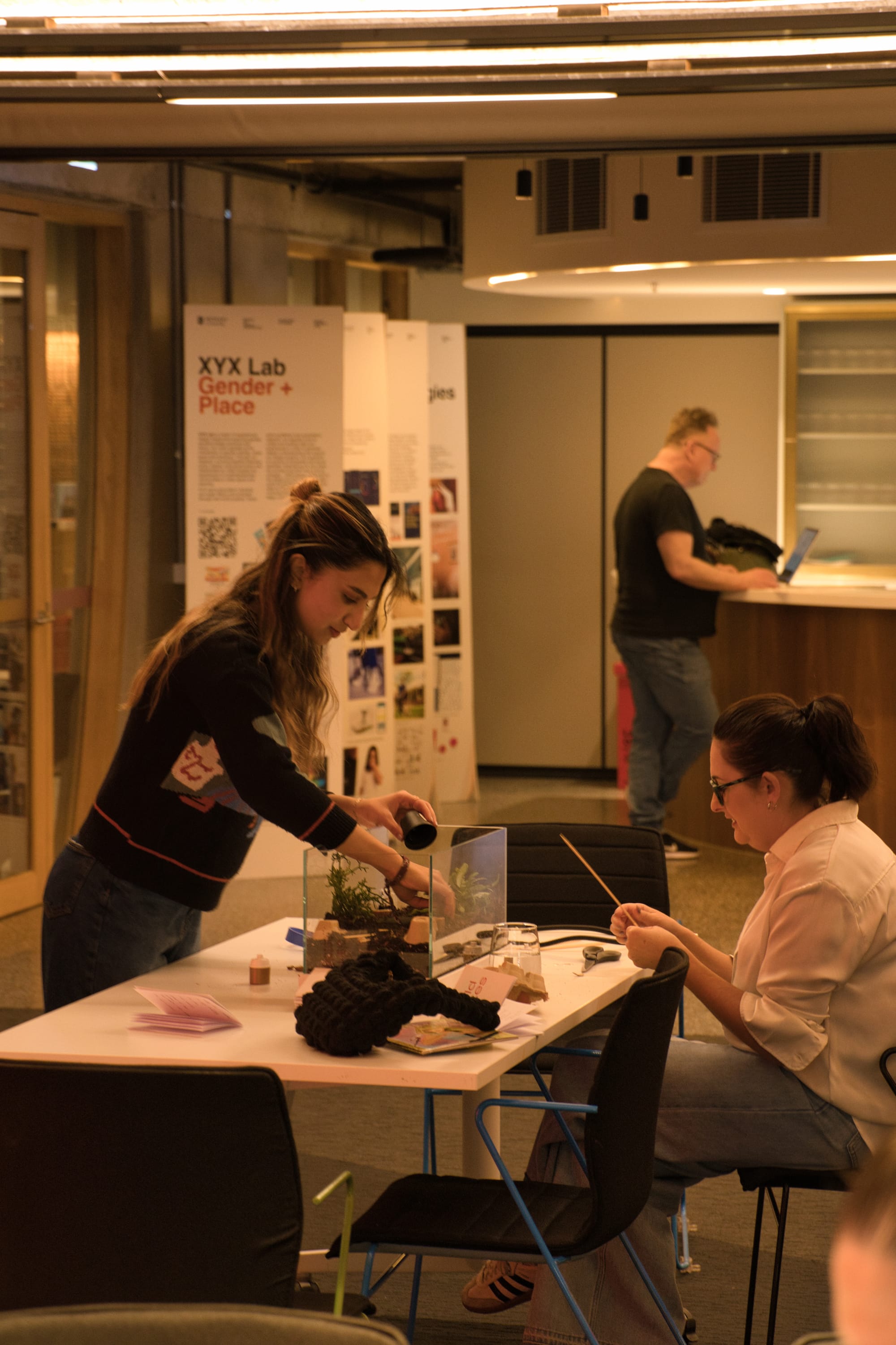


I really enjoyed hearing about people's hopes, dreams and fears, and their commitment to the living worlds they created and where they drew their inspiration from.
I enjoyed the reflection session where we asked people to share their thoughts about the process itself, how it affected their sense of agency and surprised myself when someone asked 'why actually use soil?'.
I talked at length about a few aspects:
- connection to country - if we're serious about regeneration, we need to be aware that everything of our built environment is sitting atop the soils and rocks of the 'real world' beneath our feet. Using soil and organic materials is an explicit invitation to reintegrate more-than-human life into our imagination, and the planning, experimentation and realisation of those futures
- our future visions need care and maintenance - metaphorically and literally, if you make a living world to represent the futures you want, you're going to need to keep working beyond the workshop to make them a reality. I'd love for people to take their living worlds with them, as a reminder of the investment they need to continue to make
- realising latent knowings - we actually began this method as a metaphor - the subsurface layers were the latent (dreams) and tacit (feelings) knowledge we all hold in us but rarely get to express - we wanted to enable people to give form to that through making
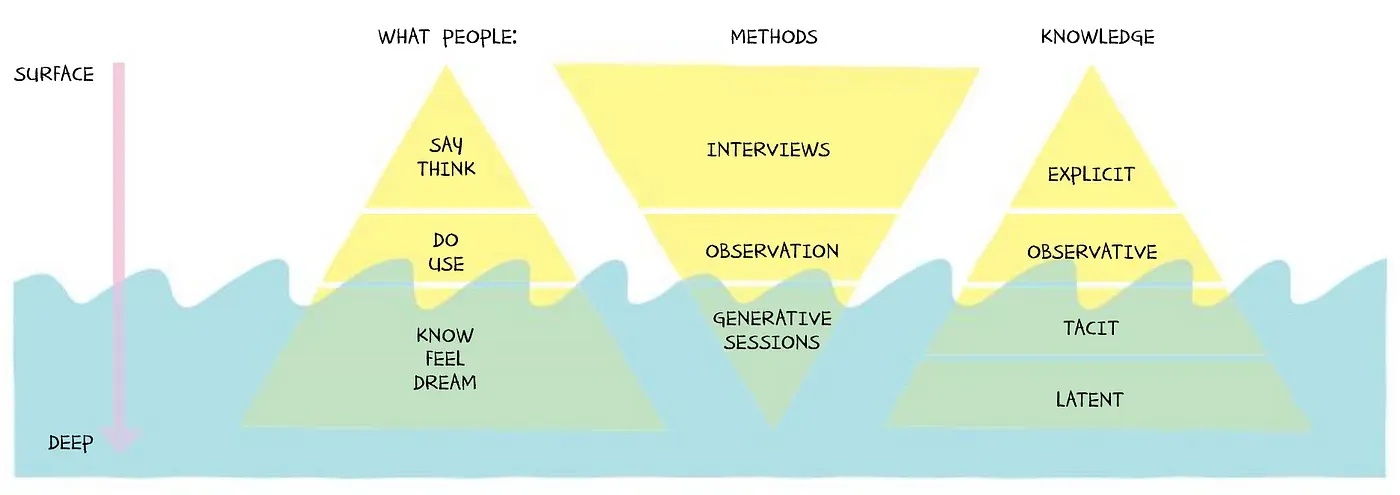
What's next?
Handbook - This session reminded me that I feel really passionate about the need for this particular part of the research we've led at Monash, to have a dedicated handbook so that other people can pick it up and run with it. I'd like to see people using these sorts of methods in government, community groups, transition labs, and much more. Watch this space.
Living Worlds findings - my co-conspirator Dion has been working away on developing a website which is cataloguing the living worlds generated in the research project, which should be released in the next 3 months or so. I'll post the link when it comes out.
Links
Find out more about Living Worlds and the research conducted through Net Zero Precincts in the agenda setting phase report here: https://www.monash.edu/msdi/initiatives/reports/net-zero-precincts-stage-2-agenda-setting
Find out more about Regen Streets here. https://www.regen.melbourne/regen-streets
Find out more about work I've done in the past with organic materials and themed around regeneration:
